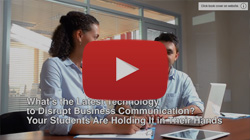 "When cultures mix there are many unknowns, such as different accents, unfamiliar body language and tones of voice. There are also different communication styles, customs and protocols. This can lead to participants being self-conscious and nervous about doing or saying the wrong thing, with a fear of appearing incompetent or inappropriate. In business we all have a certain identity we wish to maintain and do not want others to form negative opinions about us. All these factors produce tension."
"When cultures mix there are many unknowns, such as different accents, unfamiliar body language and tones of voice. There are also different communication styles, customs and protocols. This can lead to participants being self-conscious and nervous about doing or saying the wrong thing, with a fear of appearing incompetent or inappropriate. In business we all have a certain identity we wish to maintain and do not want others to form negative opinions about us. All these factors produce tension."
Teaching Business Communication
Connects business communication instructors with vital
news and indispensible insights. Read More
Relieving Intercultural Tension
How to Write a White Paper: The Definitive Guide (2018)
You’re ready to compile and share your company’s deep knowledge of your industry. A white paper seems like the perfect format. It’s a useful product to highlight your company’s expertise and a valuable tool in marketing.
![]()
Practice Adapting Across Cultures
 ". . . You have to practice so that change can happen. Why? Because change is not a destination, it is a process. Accustomed as most of us are to a goal-oriented mindset in business, a common misconception is that we can set targets on communication changes and get there on deadline."
". . . You have to practice so that change can happen. Why? Because change is not a destination, it is a process. Accustomed as most of us are to a goal-oriented mindset in business, a common misconception is that we can set targets on communication changes and get there on deadline."
The Future of Communication: Haptic Technologies
As the most intimate form of communication, touch can convey shades of emotion and meaning in ways that other forms can’t match. Think of the range of messages you can send by the way you greet someone, for example. A firm handshake, a light kiss on the cheek, an awkward embrace, and a fist bump all send different nonverbal signals.
Touch is a vital aspect of human-to-human and human-to-machine interaction, but it is missing from most forms of digital communication. You can’t give someone a hearty handshake over email or feel the vibration patterns of a machine while viewing it over a video link.
However, the field of haptic technology is enabling touch and tactile sensations in a growing number of ways. Mobile devices and wearables such as smartwatches are incorporating haptic input and output in ways that simulate the nuances of human touch or offer sensory substitution—using haptic feedback to translate visual or auditory information into vibration and pressure. When combined with virtual reality, haptics can create simulations so realistic they are being used to train surgeons and nuclear power plant technicians. . .
Sourced through Scoop.it from: blog.businesscommunicationnetwork.com
Read moreThe Future of Communication: Augmented Writing
What’s the best way to say this?
That’s a never-ending question for the typical business communicator. For just about anything beyond the simplest messages, we can never be entirely sure that we’ve found the most powerful words or crafted the most effective phrases. We have to send our missives out into the ether and hope we’ve done our best.
Moreover, in many cases, we get only one chance to hit the mark. In contrast to interactive conversations (in person or online), where we get instant feedback and can adjust the message if needed, a lot of business writing is a one-shot affair and we’ll never know if we’ve been as effective as we could be.
Digital tools have been assisting writers for decades, as far back as spell checkers that predate the PC era, but most haven’t done much beyond applying simple rules. However, recent advances in natural language processing show some potential to fill this feedback void by providing instantaneous advice about the effectiveness of our language. . .”
Sourced through Scoop.it from: blog.businesscommunicationnetwork.com
Read moreThe Future of Communication: Real-Time Translation
Trying to converse in a language in which you are not fully fluent presents a rather staggering cognitive workload. As a listener, you have to convert the incoming sounds to discrete words and assemble those words into coherent phrases and sentences in order to extract the meaning—and if the other party uses idioms or slang, the task can get exponentially harder.
And unlike reading a written document, you have to do all this processing almost instantaneously, without the luxury of going back over something you didn’t get.
As a speaker, you have to find the right words, assemble them into phrases and sentences using the language’s grammar rules, and then pronounce them all correctly enough so they make sense to the other party. Honing this level of proficiency can take years of study and practice.
Sourced through Scoop.it from: blog.businesscommunicationnetwork.com
Read more11 Smarter Strategies for Procrastinators Who’ve Tried Everything Else
 "Do you ever find yourself mindlessly browsing social media, not knowing how exactly you ended up there? Or perhaps you have a serious deadline looming ahead. You promise to buckle down and get to work, but 30 minutes later, you inevitably find yourself knee-deep in pages of unrelated Wikipedia entries. Those are pretty sure signs that your procrastination might have gotten out of hand—to the point of occurring on autopilot," writes Carline Liu (photo, left) at TheMuse.com
"Do you ever find yourself mindlessly browsing social media, not knowing how exactly you ended up there? Or perhaps you have a serious deadline looming ahead. You promise to buckle down and get to work, but 30 minutes later, you inevitably find yourself knee-deep in pages of unrelated Wikipedia entries. Those are pretty sure signs that your procrastination might have gotten out of hand—to the point of occurring on autopilot," writes Carline Liu (photo, left) at TheMuse.com
"This isn’t to say that you haven’t tried to break this bad habit—because you certainly have. If it seems like nothing has been working for you until now, then we have good news: These are resources that provide practical steps to starting and finishing your tasks on time. . . ."
Read the full article . . .
Read the full article . . .The Future of Communication: The Internet of Things
We’ve been following technologies that cover an interesting array of possibilities, from enhancing existing communication modes to replacing at least one of the humans in a conversation to assisting people who have a variety of motor, vision, and cognitive impairments.
They are all across the adoption curve, from technologies that are already approaching mainstream usage (such as bots and gamification) to a few that are closer to the sci-fi end of things (such as holograms and telepathic communication). Many of these systems rely on artificial intelligence, which is reshaping business communication in some profound ways.
All of them present interesting discussion topics for business communication, because they get to the heart of matter, which is trying to exchange information and meaning in the most effective and efficient ways possible.
This post is about technologies that are shaping the future of communication.
Sourced through Scoop.it from: blog.businesscommunicationnetwork.com
Read moreBe Nice and Make Less Work for Your Reader
The other day at my health club I asked an employee what time the bank parking lot was available for club members’ use. I knew I could use the bank lot when the bank closed, but I wasn’t sure what…
Peak, Peek, and Pique. How to Use these Homophones Correctly.
Homophones are words that sound the same when spoken but have different meanings and spellings.
![]()








